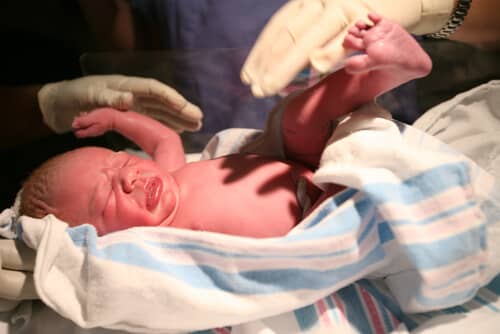
Birth Injuries - Induced Labor
Under ideal circumstances, a woman will go into labor when her baby and her body tell her she is ready. However, in some situations, labor may need to be induced prior to the time when it would begin naturally.
Induced labor involves using medical devices or medication to prepare the cervix for labor and to prompt contractions of the uterus. Induced labor can save lives when used properly. Unfortunately, doctors are sometimes negligent in their decision to induce labor. This puts the mother and baby at risk.
Making the Decision to Induce Labor
Labor should be induced if the body fails to start the process of labor. For example, labor may be induced if:
- The mother is more than two weeks beyond the due date.
- The mother’s water breaks but there are no signs of contractions.
- Fetal growth has stopped.
- An infection develops in the uterus.
- Problems develop with the placenta.
- Either mother or baby is experiencing other health complications.
When making the decision to induce labor, your doctor will first assess the Bishop score. The Bishop score refers to how ready your cervix is for labor. A Bishop score is set on a scale of 1-13 and takes into account cervical dilation (how open the cervix is), the position of the cervix, the position of the baby and the softness and consistency of the cervix.
How the Labor Inducing Process Works
Your doctor may then begin by stripping the membranes in the cervix. While this doesn’t typically induce labor on its own, this step is often necessary to soften the cervix. It involves the doctor using a finger to separate a part of the amniotic sac from your uterus. When the amniotic sac is pulled partially away, the body releases the prostaglandin hormone to soften the cervix.
Your doctor may also perform other necessary steps toward inducing labor including:
- Applying prostaglandin gel to the cervix to prepare the cervix for delivery. The gel can start contractions in just a few hours. The gel can be used on its own or in conjunction with the labor-inducing drug Pitocin.
- Inserting laminaria or a catheter into the cervix to widen it or cause dilation.
- Breaking your water. This procedure, called amniotomy, is done using a special tool inserted vaginally and used to puncture the amniotic sac. Once the water is broken, labor must continue in order to avoid infection.
- Administering Pitocin. Pitocin is a synthetic hormone administered intravenously. It is a replacement for oxytocin, a hormone that causes uterine contractions. Pitocin can start contractions within just 30 minutes.
When labor is induced, a mother may be able to deliver vaginally if the labor progresses normally. However, a Caesarean section may be required in some cases, especially if the amniotic sac is broken but labor doesn’t progress.
According to Time Magazine, mothers whose labor was induced were more than twice as likely to have a C-section. When Pitocin is administered, it can also result in more painful contractions, necessitating an epidural even in a mother committed to natural childbirth.
Medical Malpractice and Unnecessary Induced Labor
Induced labor can be the right choice when medically necessary to protect the health of the mother or child. In other cases, however, labor may be induced despite the absence of a legitimate medical reason. For example, a doctor may induce labor:
- To deliver a baby at a convenient time or before he goes out of town.
- As a result of a misdiagnosis of a health issue in either the mother or child.
- To obtain a larger insurance payout or greater payments for medical care.
In any situation where a doctor induces labor with no legitimate medical reason to do so, the doctor can be considered negligent. A doctor is negligent and liable for malpractice if no reasonable physician in his/her position would have made the same decision on induction.
Risks, Injuries & Complications Caused By Induced Labor
Induced labor has many risks, including:
- Overstimulation of the uterus, causing too many contractions
- Rupture of the uterus
- Death of mother or baby
- C-section risks and complications (The Mayo Clinic reports that babies delivered via Caesarean section may be more likely to develop a breathing problem, have lower APGAR scores or be cut during the incision. Mothers who deliver via a c-section are at risk of excess bleeding, infection and inflammation of uterine membranes, reactions to anesthesia or the development of blood clots.)
- Increased risk of fetal heart rate problems
- Increased risk of shoulder dystocia (This occurs when a baby’s head can be delivered but his shoulders are trapped in the birth canal. The baby can become lodged in the birth canal and potentially suffer from fractures of the clavicle or humerus. The baby could also be asphyxiated.)
Complications can potentially be considered the fault of the doctor who induced labor if the problems can be directly tied to physician negligence.
Contact Our Chicago Induced Labor Attorneys
If your doctor negligently induced labor, your doctor may be liable for medical malpractice. A Chicago induced labor lawyer can help you to take legal action.
At Salvi, Schostok & Pritchard P.C., we have extensive experience with birth injury claims, including cases involving unnecessary induction. To learn how our Illinois induced labor attorneys can help, call our toll-free number today or contact us using our online form.
We can schedule a free, no-obligation consultation. You will not pay for our legal services unless we obtain compensation for you and your family.







